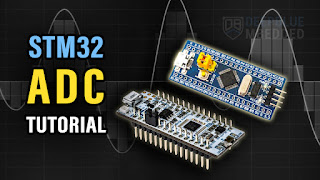How do SoCs handle external peripherals like sensors, displays, and storage?
System-on-Chip (SoC) devices handle external peripherals like sensors, displays, and storage through integrated I/O interfaces, communication protocols, and peripheral controllers. Here's a breakdown of how SoCs manage this:
🔌 1. Peripheral Interfaces
SoCs integrate standard I/O interfaces that allow connection to a wide variety of external devices:
| Interface | Used For | Example Devices |
|---|---|---|
| I2C (Inter-Integrated Circuit) | Low-speed sensor communication | Temp sensors, accelerometers |
| SPI (Serial Peripheral Interface) | Faster serial communication | Flash storage, ADCs |
| UART (Universal Async Receiver/Transmitter) | Serial communication | GPS modules, serial consoles |
| GPIO (General Purpose I/O) | Basic digital signals | Buttons, LEDs |
| USB | General external communication | Keyboards, USB drives |
| PCIe | High-speed interconnect | NVMe SSDs, Wi-Fi modules |
| SDIO | SD card interfaces | MicroSD storage |
| MIPI CSI/DSI | Camera and display interfaces | Image sensors, LCDs |
| Ethernet | Networking | LAN access |
🧠 2. Integrated Controllers
SoCs often have hardware controllers for these interfaces:
-
I2C controller: Manages communication timing and protocol for I2C devices.
-
Display controller (GPU or LCD interface): Drives displays via HDMI, DSI, or parallel RGB.
-
SD/eMMC controller: Talks to onboard or removable storage.
-
USB Host/Device controller: Manages USB peripherals or acts as a USB device.
🛠 3. Software Drivers
A key component in managing peripherals is software (often via an OS like Linux, RTOS, or bare-metal code):
-
Device drivers abstract the hardware and provide APIs.
-
Device tree in Linux-based systems maps peripherals to physical pins and memory.
-
Middleware/SDKs (e.g., Xilinx Vitis, STM32CubeMX) help configure and interface with external devices.
🔄 4. Interrupts and DMA
Efficient data transfer is handled by:
-
Interrupts: Signal the CPU when a peripheral has data or needs attention.
-
DMA (Direct Memory Access): Moves data between peripherals and memory without CPU overhead.
🧩 5. Examples
-
Sensor (e.g., temperature sensor over I2C):
-
I2C controller polls or receives data
-
Driver processes and sends it to application
-
-
Display (e.g., TFT LCD):
-
Data sent over parallel bus or DSI
-
Display controller and frame buffers used
-
-
Storage (e.g., SD card):
-
SDIO interface reads/writes data
-
Filesystem driver manages files
-
Summary
SoCs interface with peripherals via built-in hardware interfaces, peripheral controllers, and software drivers, allowing flexible and efficient integration of sensors, displays, storage, and more.




评论
发表评论